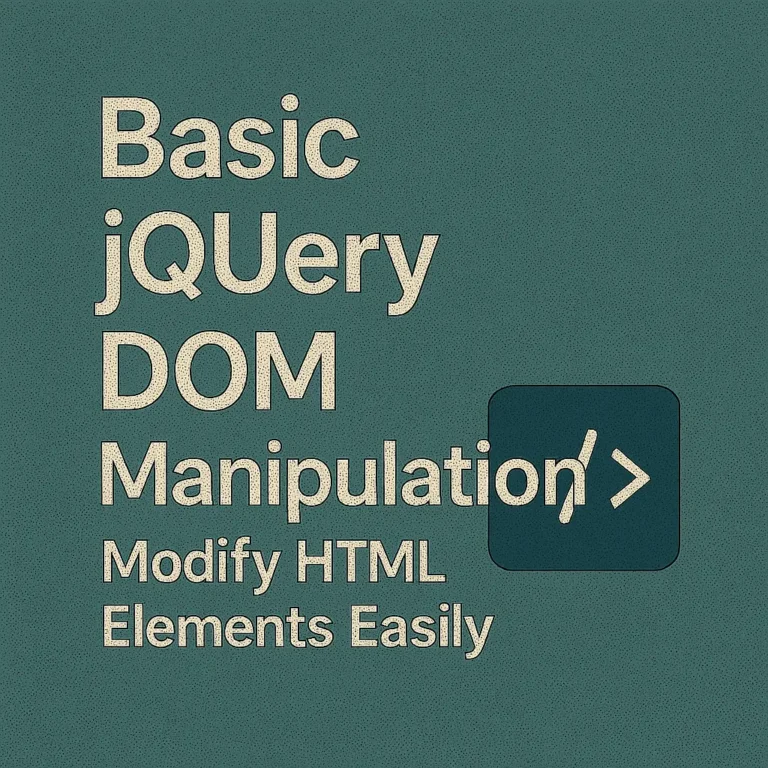At the heart of jQuery lies its powerful selector engine, which allows developers to efficiently target elements within the DOM. In this article, we will delve into the various types of selectors available in jQuery, including basic selectors, attribute selectors, and pseudo-selectors, and explore how they can be used effectively in your projects.
Basic Selectors
Basic selectors are the most straightforward way to select elements in jQuery. They allow you to target elements by their tag name, class, or ID. Let’s look at some examples:
Tag Name Selector:
To select all <p> elements on a page, you can use the following code:
$("p").css("color", "red");
This will apply a red color to all paragraphs on the page.
Class Selector:
To select all elements with a particular class, you can use the class selector:
$(".myClass").hide();
This will hide all elements with the class “myClass”.
ID Selector:
To select an element by its ID, you can use the ID selector:
$("#myId").fadeIn();
his will fade in the element with the ID “myId”.
Attribute Selectors
Attribute selectors allow you to target elements based on their attributes. You can select elements by attribute name, attribute value, or a combination of both.
Attribute Name Selector:
To select all elements with a specific attribute, you can use the following syntax:
$("[name]").addClass("highlight");
This will add the class “highlight” to all elements with a “name” attribute.
Attribute Value Selector:
To select elements with a specific attribute value, you can use the following syntax:
$("[type='text']").css("background-color", "yellow");
This will change the background color of all input elements with the attribute type set to “text”.
Pseudo-selectors
Pseudo-selectors allow you to target elements based on their position or state in the DOM. They are preceded by a colon (:).
first Selector:
To select the first element of a certain type, you can use the :first pseudo-selector:
$("p:first").addClass("first");
This will add the class “first” to the first paragraph on the page.
last Selector:
Similarly, you can select the last element of a certain type using the :last pseudo-selector:
$("div:last").addClass("last");
This will add the class “last” to the last div element on the page.
even and :odd Selectors:
These selectors allow you to select even or odd elements within a set:
$("tr:even").addClass("even");
$("tr:odd").addClass("odd");
This will add the classes “even” and “odd” to alternating table rows.
Conclusion
In conclusion, jQuery’s selector capabilities provide a powerful means of targeting and manipulating elements within the DOM. By mastering basic selectors, attribute selectors, and pseudo-selectors, you can significantly enhance your ability to create dynamic and interactive web applications.
Feel free to experiment with these selectors in your projects and discover the full extent of their potential!






